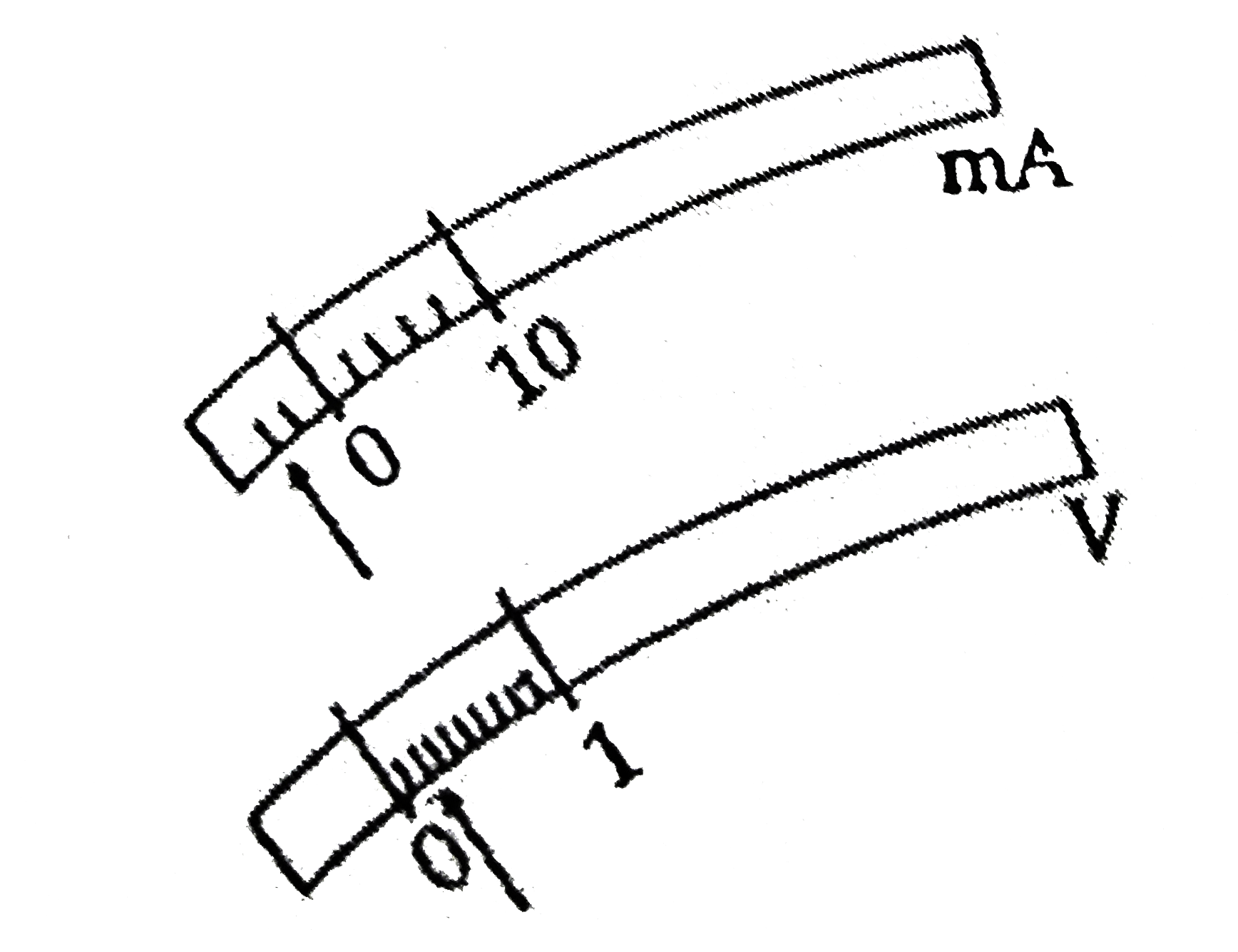The rest positions of the needles in a milliammeter and voltmeter not in use are as shown in (Fig. 3.61)(a). When a student uses these in his experiment, the readings of the needles are in the positions shown in (Fig. 3.61)(b). Find the corrected values of current and voltage in the experiment.
 .
.
Step by step video & image solution for The rest positions of the needles in a milliammeter and voltmeter not in use are as shown in (Fig. 3.61)(a). When a student uses these in his experiment, the readings of the needles are in the positions shown in (Fig. 3.61)(b). Find the corrected values of current and voltage in the experiment. . by Chemistry experts to help you in doubts & scoring excellent marks in Class 10 exams.
Topper's Solved these Questions
- BOOK - VK GLOBAL PUBLICATIONCHAPTER - MODEL QUESTION PAPER-6EXERCISE - SECTION-B4videos
MODEL QUESTION PAPER-6
- BOOK - VK GLOBAL PUBLICATIONCHAPTER - MODEL QUESTION PAPER-3EXERCISE - SECTION-B2videos
MODEL QUESTION PAPER-3
- BOOK - VK GLOBAL PUBLICATIONCHAPTER - MODEL QUESTION PAPER-7EXERCISE - EXERCISE (SECTION-A)7videos
MODEL QUESTION PAPER-7
Similar Questions
The rest positions of the needles in a milliammeter and voltmeter not in use are as shown in Fig. A. When a student uses these in his experiment, the readings of the needle are in the positions shown in Fig.B.

Find the corrected values of current and voltage in the experiment.View SolutionIn the circuit shown in (fig. 3.51), find the current recorded by ammeter (A).
 .View Solution
.View Solution
Knowledge Check
- Question 1 - Select One
The rest positions of the needles in a milliammeter and voltmeter not in use are as shown in (Fig. 3.61)(a). When a student uses these in his experiment, the readings of the needles are in the positions shown in (Fig. 3.61)(b). Find the corrected values of current and voltage in the experiment.
 .A42 mA and 3.2 VB42 mA and 4.0 VC34 mA and 3.2 VD34 mA and 4.0 V
.A42 mA and 3.2 VB42 mA and 4.0 VC34 mA and 3.2 VD34 mA and 4.0 V - Question 2 - Select One
The rest positions of the needles in a Milliammeter and Voltmeter when not being used in a circuit are as shown in the figure. The 'zero error' and 'least count' of these two instruments are :
 A(+ 4 mA, - 0.2 V) and (1 mA, 0.1 V) respectivelyB(+ 4 mA, - 0.2 V) and (2 mA, 0.2 V) respectivelyC(- 4 mA, + 0.2 V) and (2 mA, 0.2 V) respectivelyD(- 4 mA, + 0.2 V) and (2 mA, 0.1 V) respectively
A(+ 4 mA, - 0.2 V) and (1 mA, 0.1 V) respectivelyB(+ 4 mA, - 0.2 V) and (2 mA, 0.2 V) respectivelyC(- 4 mA, + 0.2 V) and (2 mA, 0.2 V) respectivelyD(- 4 mA, + 0.2 V) and (2 mA, 0.1 V) respectively - Question 3 - Select One
Four students recorded the readings of the potential differece by observing the position of the pointer of an ideal voltmeter as shown below :

The correct reading is :A2.5 VB2.0 VC2.2 VD2.4 V
Which one of the given four milliammeters shown in (Fig. 3.60) would you use for measurement of current flowing in a circuit ?
 View Solution
View SolutionFor the circuits AandB shown in (Fig. 3.64), what would be the voltmeter readings ?
 .View Solution
.View SolutionFind the total current in the circuits shown in Fig. , , and . Each diode used is ideal
 View Solution
View SolutionThe current flowing through a conductor and the potential difference across its two ends are as per reading of the ammeter and the voltmeter shown in (Fig. 3.50). Find the resistance of the conductor.
 .View Solution
.View SolutionA gas undergoes change in its state from position A to position B via three different path as shown in Fig. Select the correct alternatives :
 View Solution
View Solution
